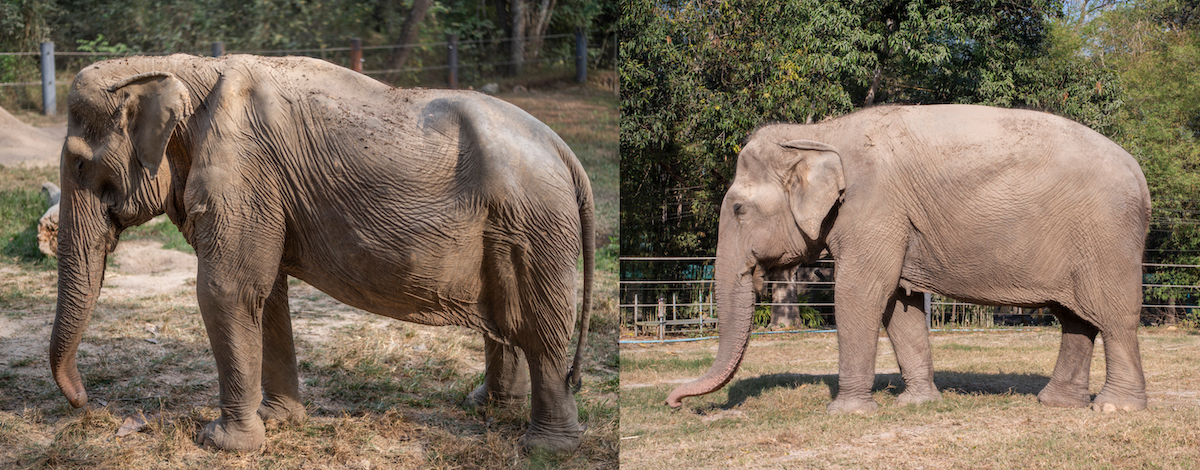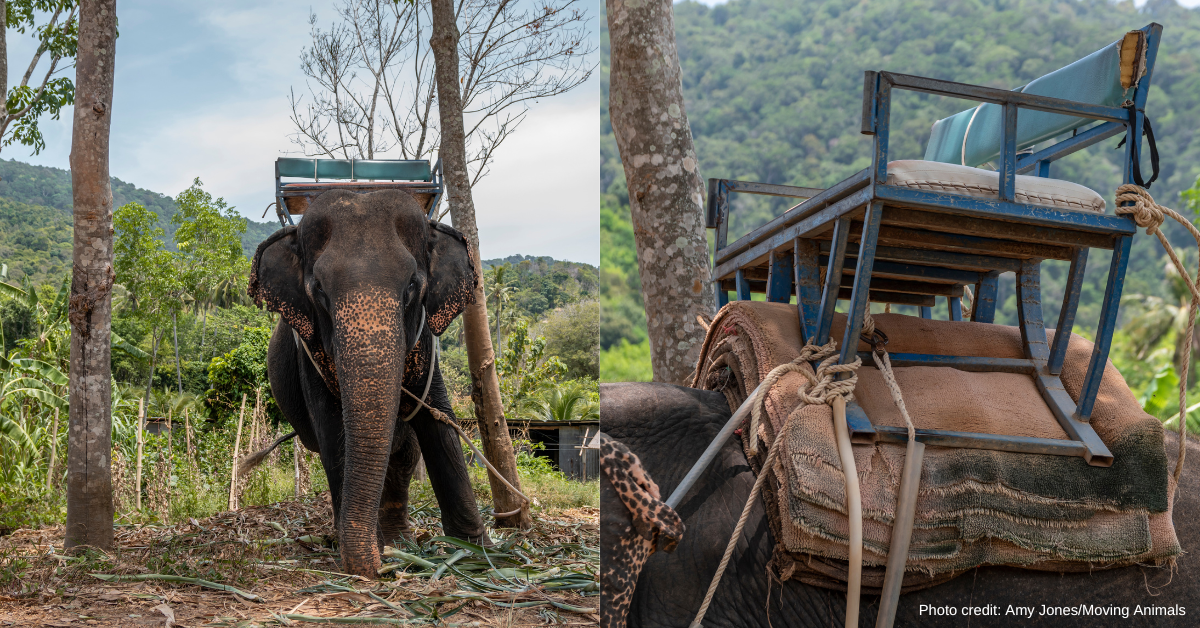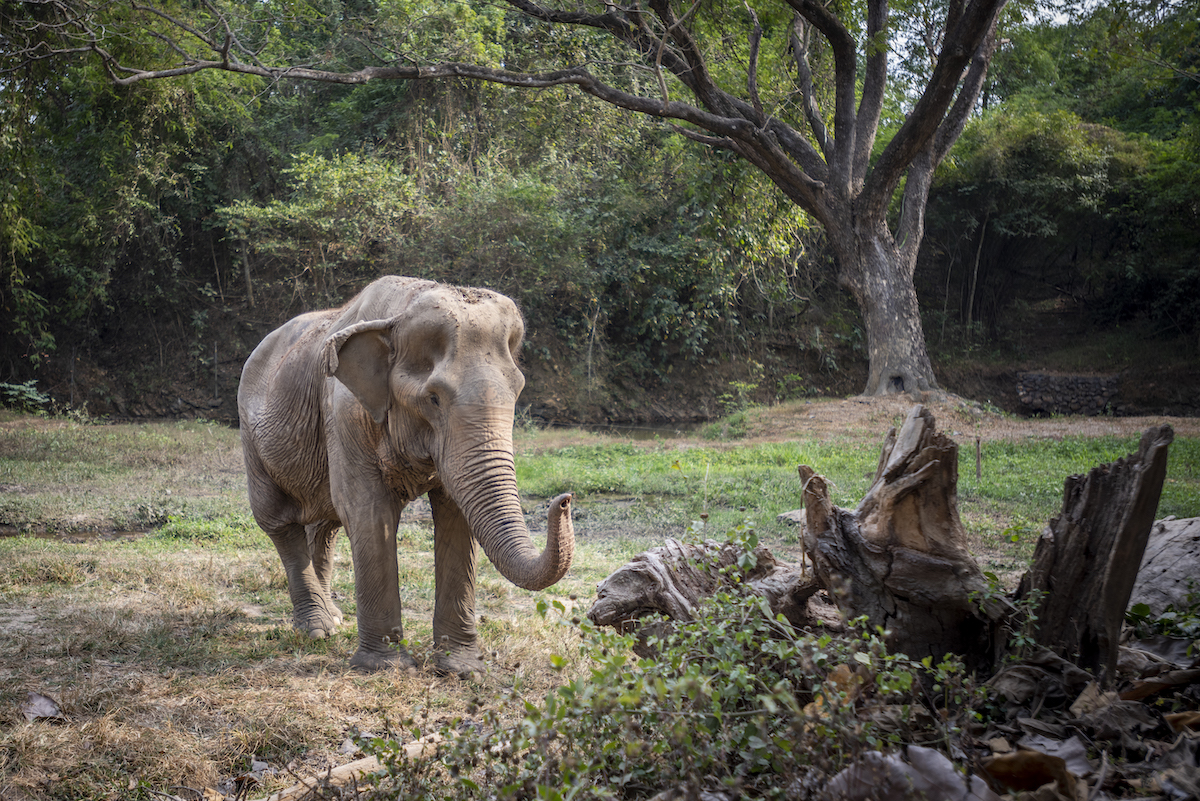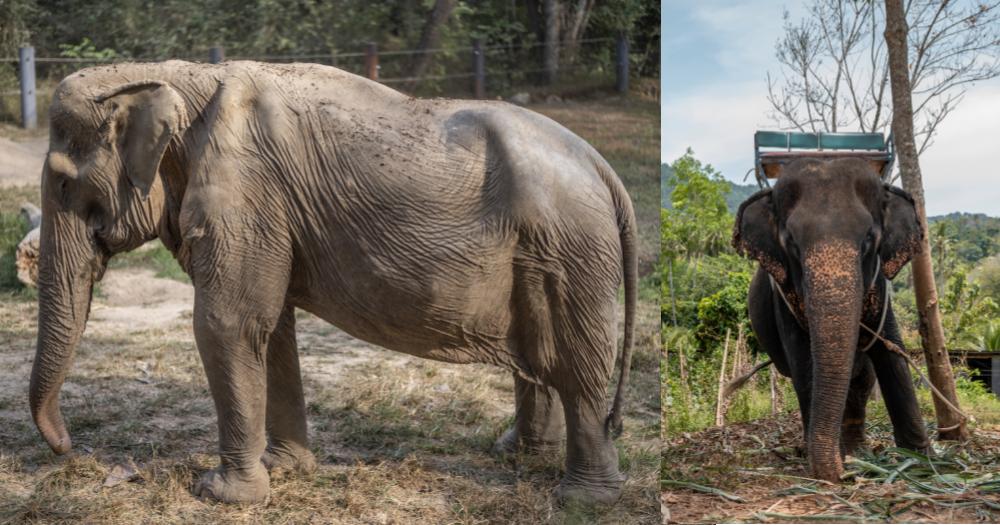Follow us on Telegram for the latest updates: https://t.me/mothershipsg
As the world slowly returns to pre-pandemic normal, more people are planning overseas trips as countries relax their border controls.
Travellers are returning to popular destinations like Thailand, but before you book one of their popular elephant rides, the Wildlife Friends Foundation of Thailand (WFFT) wants you to think twice.
Deformed spine after 25 years
One elephant named Pai Lin had spent 25 years as an animal ride in Thailand.
Ordinary elephants have a dome-shaped spine, but Pai Lin's spine had caved in.
 Left, Pai Lin and her deformed spine. Right, a typical dome-shaped spine. Image via WFFT.
Left, Pai Lin and her deformed spine. Right, a typical dome-shaped spine. Image via WFFT.
WFFT said Pai Lin's spine was permanently damaged after years of carrying tourists on its back.
Unfortunately, such damage is typical in elephants in the trekking industry.
Elephants used for trekking often have to carry the weight of up to six tourists at a time, along with their mahout (handler) and the heavy howdah (seat) for an entire day, the non-profit revealed.
The constant heavy load causes their bones and tissues to deteriorate slowly and permanently damage their spines.
The howdah has also left scars on Pai Lin's back.
 An elephant with howdah (seats) on its back. Image via WFFT.
An elephant with howdah (seats) on its back. Image via WFFT.
Urges people to avoid animal rides
Pai Lin is currently living happily with 22 other elephants rescued by WFFT.
Most of WFFT's rescued elephants suffered from decades of abuse.
 Pai Lin at WFFT, image via WFFT.
Pai Lin at WFFT, image via WFFT.
"While elephants may be known for their strength and size, their backs are not naturally designed to carry weight, as their spines extend upwards," said Tom Taylor, a project director of WFFT.
WFFT hopes to raise awareness of how the riding industry is causing many elephants to suffer and encourage tourists to support only ethical and sustainable elephant sanctuaries while avoiding establishments that offer riding or other exploitative practices.
Asian elephant
The Asian elephant, the largest land mammal on the Asian continent, is critically endangered and faces a high risk of extinction.
Once found in most parts of Asia, the species is now found only in south and south-west Asia.
Today, there are fewer than 52,000 Asian elephants left in the wild. More than half of the wild Asian elephants are found in India, and they move across the border before India and Nepal.
Asia elephants are important grazers and they help disperse seeds as they move.
As large mammals, they help open up gaps in dense forests so that sunlight can pass through to reach seedlings or plants at the understory level or below.
They also help create access to water by digging when water is not available on the surface.
Elephants are extremely intelligent creatures and have a superb memory.
Top image via WFFT and Amy Jones/Moving Animals.
If you like what you read, follow us on Facebook, Instagram, Twitter and Telegram to get the latest updates.
